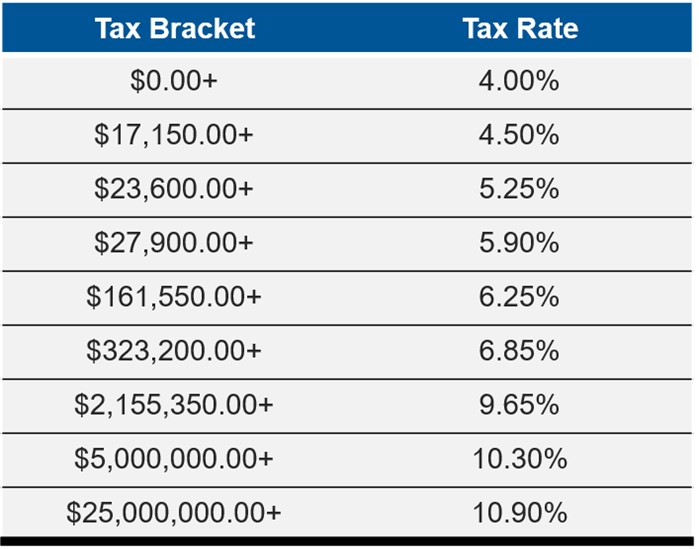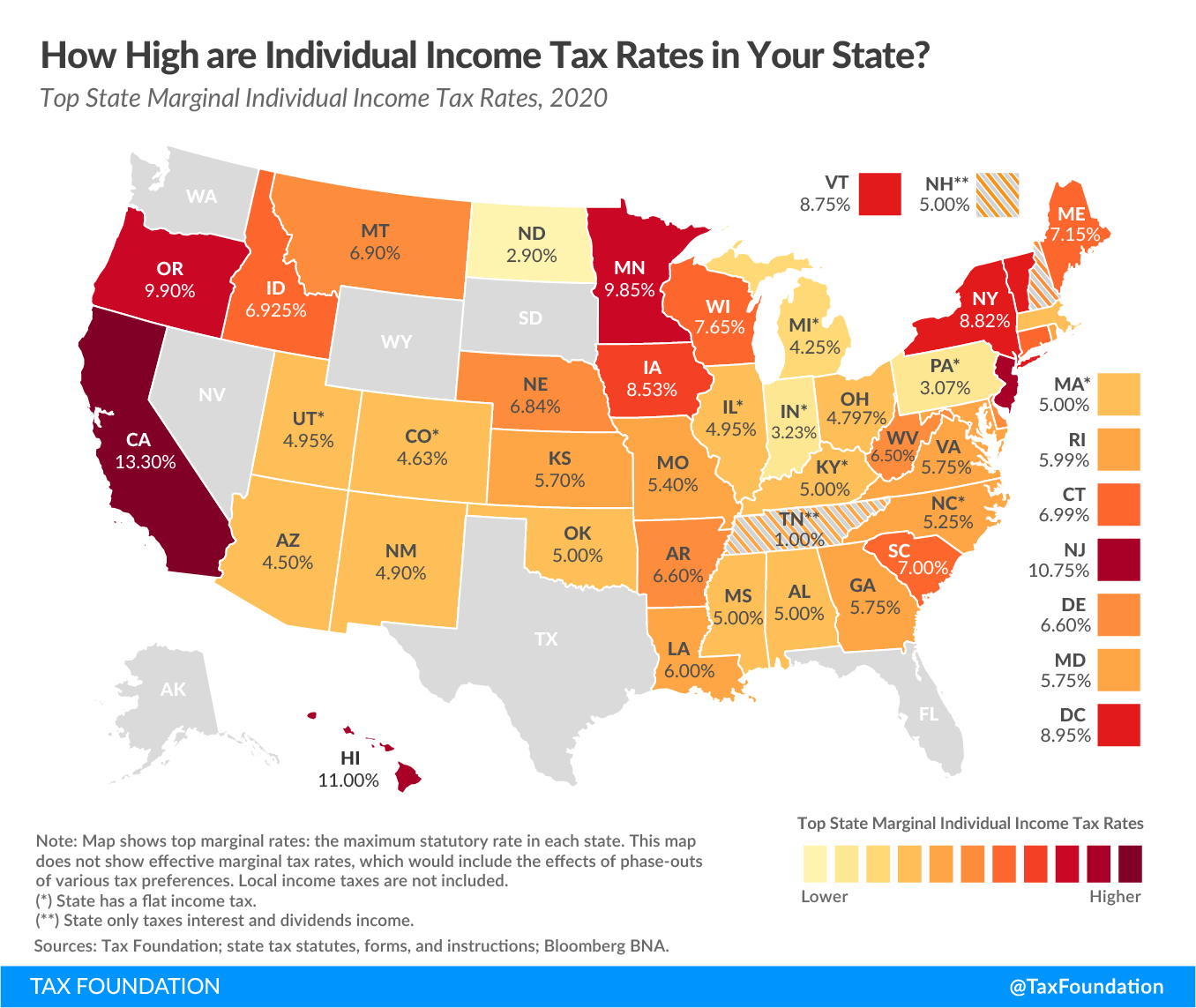New York State income tax brackets are an essential aspect of financial planning for residents. Understanding how these brackets work can significantly impact your tax liabilities and savings. As of the latest updates, New York State employs a progressive tax system where higher income levels are taxed at higher rates. This system ensures that individuals contribute according to their earning capacity, making it crucial for taxpayers to stay informed about changes and thresholds.
Whether you're a long-time resident or a newcomer to the state, staying updated on New York's income tax brackets can help you make smarter financial decisions. This article dives deep into the intricacies of the state's tax structure, providing insights into how these brackets are determined and how they affect your overall tax obligations. By understanding these brackets, you can better plan for deductions, credits, and potential tax savings.
As tax laws evolve, it's important to have a reliable resource that explains New York State income tax brackets in a way that's both accessible and actionable. This guide covers everything from the basics of tax brackets to advanced strategies for minimizing your tax burden. Let's explore how New York State structures its income tax system and what it means for you as a taxpayer.
Read also:Chris Simms The Story Of A Resilient Nfl Quarterback
What Are New York State Income Tax Brackets?
New York State income tax brackets refer to the specific ranges of income that are taxed at different rates. These brackets are part of a progressive tax system, meaning that as your income increases, so does the tax rate applied to the portion of income falling within each bracket. The state's tax brackets are designed to ensure fairness by adjusting tax rates based on earning levels.
The brackets are updated periodically to reflect inflation and changes in the economy. It's important to note that these brackets only apply to taxable income, not your gross income. Deductions and credits can significantly affect the amount of income that falls within each bracket, making it essential to understand how these factors interact with your tax obligations.
How Do New York State Income Tax Brackets Affect You?
Knowing your position within the New York State income tax brackets can help you better understand your tax liability. Each bracket represents a range of income subject to a specific tax rate. For example, if your income falls within the lowest bracket, you'll pay a lower percentage of your income in taxes compared to someone in a higher bracket. This progressive system ensures that higher earners contribute more to state revenue.
To illustrate, let's consider an individual earning $50,000 annually. Depending on the current tax brackets, this income might fall into multiple brackets, with each portion taxed at the corresponding rate. Understanding how these brackets work can help you identify opportunities for tax savings through strategic planning and deductions.
Why Should You Care About New York State Income Tax Brackets?
Understanding New York State income tax brackets is crucial for effective financial planning. By knowing how these brackets impact your tax obligations, you can take steps to minimize your tax burden. This might involve adjusting your withholding, taking advantage of available deductions, or exploring investment opportunities that offer tax benefits.
Additionally, staying informed about changes to the brackets can help you avoid unexpected tax liabilities. For example, if the brackets are adjusted due to inflation, you might find yourself in a higher bracket than anticipated. Being aware of these changes allows you to plan accordingly and make necessary adjustments to your financial strategy.
Read also:Discover The Thrills Of Killens Pond Water Park Your Ultimate Summer Getaway
How Are New York State Income Tax Brackets Determined?
New York State income tax brackets are determined through a combination of legislative decisions and economic factors. The state government regularly reviews these brackets to ensure they remain fair and effective in generating revenue. Factors such as inflation, cost of living adjustments, and economic conditions all play a role in shaping the brackets.
For instance, if inflation rises significantly, the state might adjust the brackets to prevent taxpayers from being pushed into higher brackets due to nominal income increases. This process involves careful analysis and input from experts in economics and taxation to ensure the brackets remain equitable and aligned with the state's financial goals.
What Are the Current New York State Income Tax Brackets?
As of the latest updates, the New York State income tax brackets are structured as follows:
- Bracket 1: Tax rate of 4% for income up to $8,500
- Bracket 2: Tax rate of 4.5% for income between $8,501 and $11,700
- Bracket 3: Tax rate of 5.25% for income between $11,701 and $13,900
- Bracket 4: Tax rate of 5.97% for income between $13,901 and $21,400
- Bracket 5: Tax rate of 6.09% for income between $21,401 and $80,650
- Bracket 6: Tax rate of 6.21% for income between $80,651 and $215,400
- Bracket 7: Tax rate of 6.85% for income above $215,400
These brackets are subject to change, so it's important to consult the latest information from the New York State Department of Taxation and Finance for the most accurate details.
How Can You Calculate Your Tax Liability Based on the Brackets?
Calculating your tax liability using the New York State income tax brackets involves applying the appropriate tax rate to each portion of your income that falls within a specific bracket. For example, if your income is $100,000, you would calculate the tax for each bracket segment and sum them to determine your total liability.
Here's a step-by-step guide:
- Identify the portion of your income that falls within each bracket.
- Multiply each portion by the corresponding tax rate.
- Add up the results to get your total tax liability.
This method ensures that you accurately calculate your tax obligations based on the progressive nature of the brackets.
Can New York State Income Tax Brackets Change Annually?
Yes, New York State income tax brackets can change annually to reflect economic conditions and legislative updates. These changes are typically made to address inflation, adjust for cost of living increases, or implement new tax policies. Staying informed about potential changes is crucial for taxpayers who want to plan their finances effectively.
For instance, if the state decides to introduce a new bracket or adjust existing ones, it could impact how much tax you owe. Keeping up with these changes allows you to make informed decisions about your financial strategy, ensuring you're prepared for any adjustments to your tax obligations.
What Should You Do If the New York State Income Tax Brackets Change?
If the New York State income tax brackets change, it's important to reassess your financial plan to account for the new rates. This might involve recalculating your expected tax liability, adjusting your withholding, or exploring additional deductions and credits to offset any increases in your tax burden.
Additionally, consider consulting with a tax professional or using tax preparation software to ensure your calculations are accurate and up-to-date. These tools can help you navigate the complexities of the new brackets and identify opportunities for tax savings.
Is There a Way to Reduce Your Tax Liability Based on the Brackets?
Absolutely. There are several strategies you can use to reduce your tax liability based on the New York State income tax brackets. These include maximizing deductions, contributing to retirement accounts, and taking advantage of tax credits. By lowering your taxable income, you can potentially reduce the amount of income that falls into higher brackets, resulting in significant tax savings.
For example, contributing to a 401(k) or IRA can lower your taxable income, potentially moving you into a lower bracket. Similarly, claiming available credits such as the Earned Income Tax Credit (EITC) can further reduce your tax liability. These strategies require careful planning and consideration of your individual financial situation.
Conclusion: Mastering New York State Income Tax Brackets
Understanding New York State income tax brackets is essential for anyone looking to manage their finances effectively. By staying informed about the latest brackets and changes, you can make smarter decisions about your taxes and take advantage of opportunities for savings. Whether you're a seasoned taxpayer or new to the state, this guide provides the insights you need to navigate the complexities of New York's tax system.
Remember, the key to mastering New York State income tax brackets is staying proactive and informed. Regularly reviewing your financial situation, consulting with professionals, and leveraging available resources can help you optimize your tax strategy and achieve your financial goals.
Table of Contents
- What Are New York State Income Tax Brackets?
- How Do New York State Income Tax Brackets Affect You?
- Why Should You Care About New York State Income Tax Brackets?
- How Are New York State Income Tax Brackets Determined?
- What Are the Current New York State Income Tax Brackets?
- How Can You Calculate Your Tax Liability Based on the Brackets?
- Can New York State Income Tax Brackets Change Annually?
- What Should You Do If the New York State Income Tax Brackets Change?
- Is There a Way to Reduce Your Tax Liability Based on the Brackets?
- Conclusion: Mastering New York State Income Tax Brackets


